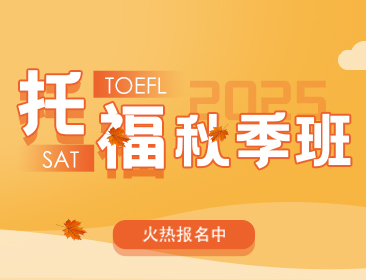

托福閱讀背景:Native Americans
2016-03-16
了解托福考試的背景知識(shí),對(duì)于提高托福做題準(zhǔn)確率,拓展知識(shí)儲(chǔ)備都很有好處,這個(gè)系列的托福背景知識(shí)希望大家好好閱讀。今天給大家?guī)?lái)“Native Americans”的背景知識(shí),希望對(duì)大家有所幫助。
Native Americans
Native Americans were living in North America for many hundreds of years before Europeans reached the continent. For a long time white people called them Indians. Today, many people do not like this name since it is based on a mistake: it was given to the people living in the Americas by Christopher Columbus who, when he arrived there, thought he had discovered India. Instead, people prefer to use the term Native Americans. There are also native peoples living in Alaska and Canada, e.g. Inuits and Aleuts, but they are separate groups and are not called Native Americans.
Early contact with Europeans
In Pre-Columbian North America there were many tribes who lived by hunting animals and gathering plants. Many of the tribes moved from one place to another according to the season and what food was available. Most of what is known about Native Americans dates from the time when they came into contact with Europeans.
The first place in the US where Europeans settled permanently was Jamestown, Virginia, founded in 1607. At first Native Americans were positive about the Europeans and were happy to have the many new things they brought, e.g. metal cooking pots, cloth and guns. But the Europeans also introduced diseases that Native Americans had no resistance to, so many became ill and died. They also brought alcohol, the effects of which Native Americans did not know. Some Europeans took advantage of this by getting them drunk and then paying low prices for their goods.
The worst problem for Native Americans, which lasted into the late 20th century, was that the new settlers wanted their land. To native Americans owning land was a strange idea. Tribes moved around as they pleased and shared land with any other tribe that was friendly. They did not understand that a person might believe a piece of land was theirs, or that they would try to keep others from using it. The settlers, on the other hand, assumed that they would take control of North America and used all means to do this, including making agreements, which they usually did not keep, tricking Native Americans into selling land cheaply, and taking it by military force. Native American chiefs like Sitting Bull, Tecumseh and Geronimo fought against the settlers.
As Whites began moving west, Native American tribes had to be moved on. Some were forced to go to other parts of North America, to areas very different from the ones they were used to. The Trail of Tears was one of many terrible examples: in the cold winter of 18389 17000 Cherokees had to move from their land in the south-east to what is now Oklahoma and more than 4000 died. The government promised tribes that if they agreed to stay in one part of the country they could keep that land forever. But the promises lasted only until Americans discovered that the land they had given them was good for farming or had gold.
Whites have explained this behaviour in different ways. When the Indians fought and killed white people they said that this proved that Native Americans were wild and had to be controlled. People also believed that the Native Americans were wasting good land by not developing it. In the 19th century Americans believed in manifest destiny, meaning that they thought God wanted them to occupy the whole continent. They also believed that it was better for the Native Americans to learn to live like white people and tried to teach them Christianity. Many Native American children, including the athlete Jim Thorpe, were taken away from their tribe and sent to schools where they were not allowed to speak their own language.
不知道以上內(nèi)容能否對(duì)您有些許幫助,如有托福備考相關(guān)問(wèn)題可以在線咨詢環(huán)球教育老師,看見后第一時(shí)間為同學(xué)們解答疑問(wèn)
環(huán)球教育秉持教育成就未來(lái)的理念,專注于為中國(guó)學(xué)子提供優(yōu)質(zhì)的出國(guó)語(yǔ)言培訓(xùn)及配套服務(wù)。環(huán)球教育在教學(xué)中采用“九步閉環(huán)法”,幫助學(xué)生快速提升學(xué)習(xí)效能,同時(shí)提供優(yōu)質(zhì)的課后服務(wù),跟進(jìn)學(xué)生學(xué)習(xí)進(jìn)程,為優(yōu)質(zhì)教學(xué)提供堅(jiān)強(qiáng)的保障。目前,環(huán)球教育北京學(xué)校已構(gòu)建了包含語(yǔ)言培訓(xùn)、出國(guó)咨詢、國(guó)際課程、游學(xué)考察、在線課程等在內(nèi)的一站式服務(wù)教育生態(tài)圈。相關(guān)問(wèn)題可在線免費(fèi)咨詢,或撥打免費(fèi)熱線400-616-8800~~



王麗青
12年行業(yè)經(jīng)驗(yàn) | 托福閱讀、寫作
 與TA約課
與TA約課
劉欣萍
13年行業(yè)經(jīng)驗(yàn) | 托福聽力、口語(yǔ)
 與TA約課
與TA約課
呂勝男
10年+行業(yè)經(jīng)驗(yàn) | 托福語(yǔ)法、閱讀/SAT文法
 與TA約課
與TA約課
張景鵬
8年行業(yè)經(jīng)驗(yàn) | 托福聽力/GRE全科/GMAT語(yǔ)法、寫作
 與TA約課
與TA約課
付敬孜
8年行業(yè)經(jīng)驗(yàn) | 托福聽力
 與TA約課
與TA約課
韓章傲
6年行業(yè)經(jīng)驗(yàn) | SAT數(shù)學(xué)/ACT數(shù)學(xué)
 與TA約課
與TA約課1 考了這么多次試,托福評(píng)分機(jī)制你真的懂?
2 環(huán)球北美考試院好課推薦-托福強(qiáng)化沖刺短期營(yíng)
3 環(huán)球教育北美考試院18年低調(diào)鉆研 · 今朝揚(yáng)帆起航
4 托福考試難嗎
5 2023年86場(chǎng)托福考試寫作題目歸總
6 官宣!2024托福iBT®考位今日正式開放報(bào)名!!
7 官宣!2023托福全新升級(jí),考試時(shí)長(zhǎng)將縮短至2小時(shí)內(nèi)!
8 2023超級(jí)VIP小班授課開始招生啦 !
9 2023 TOEFL Junior(小托福)考位免費(fèi)送啦!
10 當(dāng)當(dāng)當(dāng)~當(dāng)~環(huán)球教育代言人閃亮登場(chǎng)!
 400-616-8800
400-616-8800
全國(guó)課程咨詢熱線
 免費(fèi)咨詢
免費(fèi)咨詢北京環(huán)球天下教育科技有限公司 版權(quán)所有 課程咨詢熱線:400-099-7860
Copyright ? Copyright 1997 – 2025 www.linyunnan.com All Rights Reserved. 京ICP備09100069號(hào)-4
市場(chǎng)合作申請(qǐng)